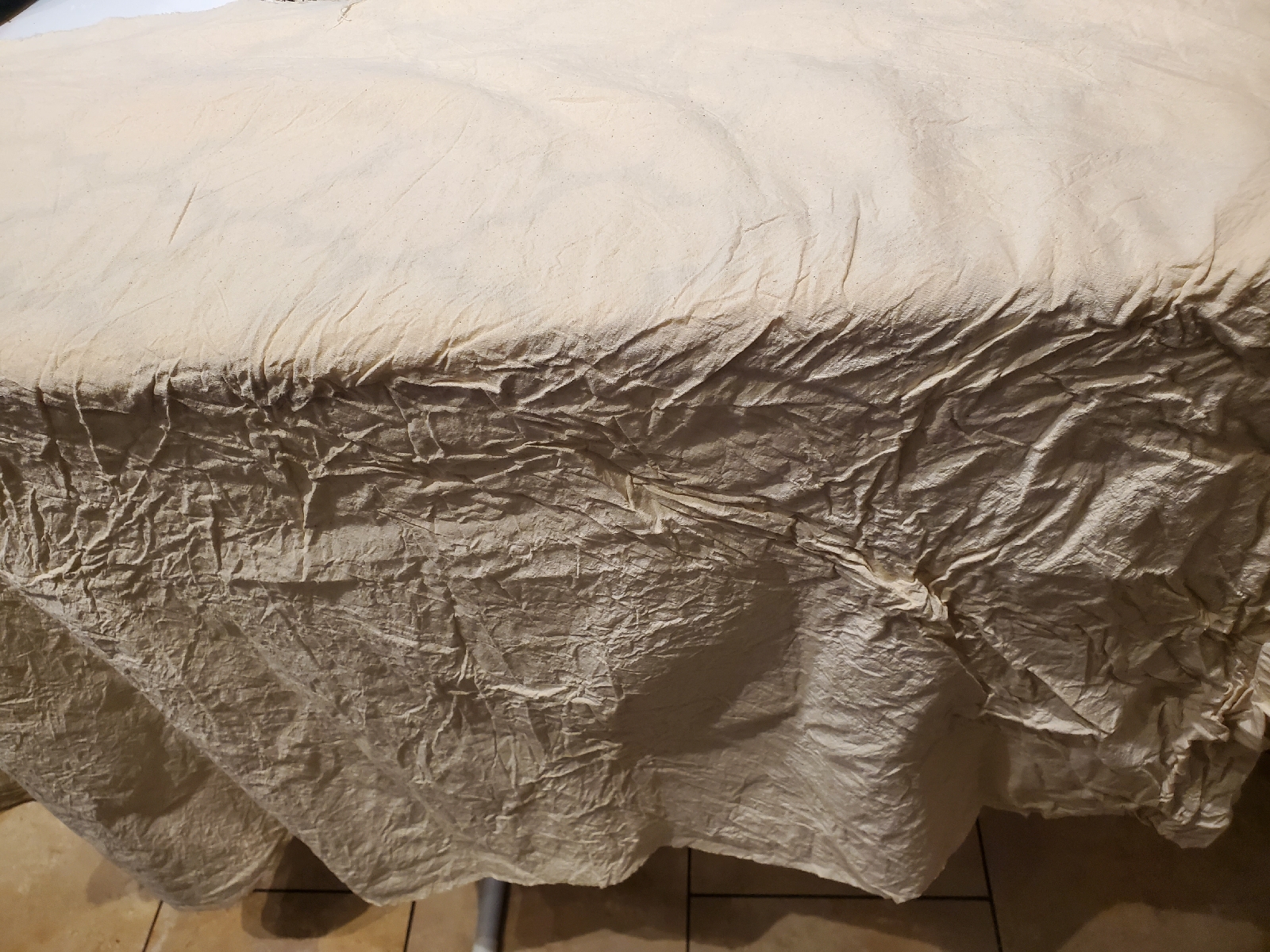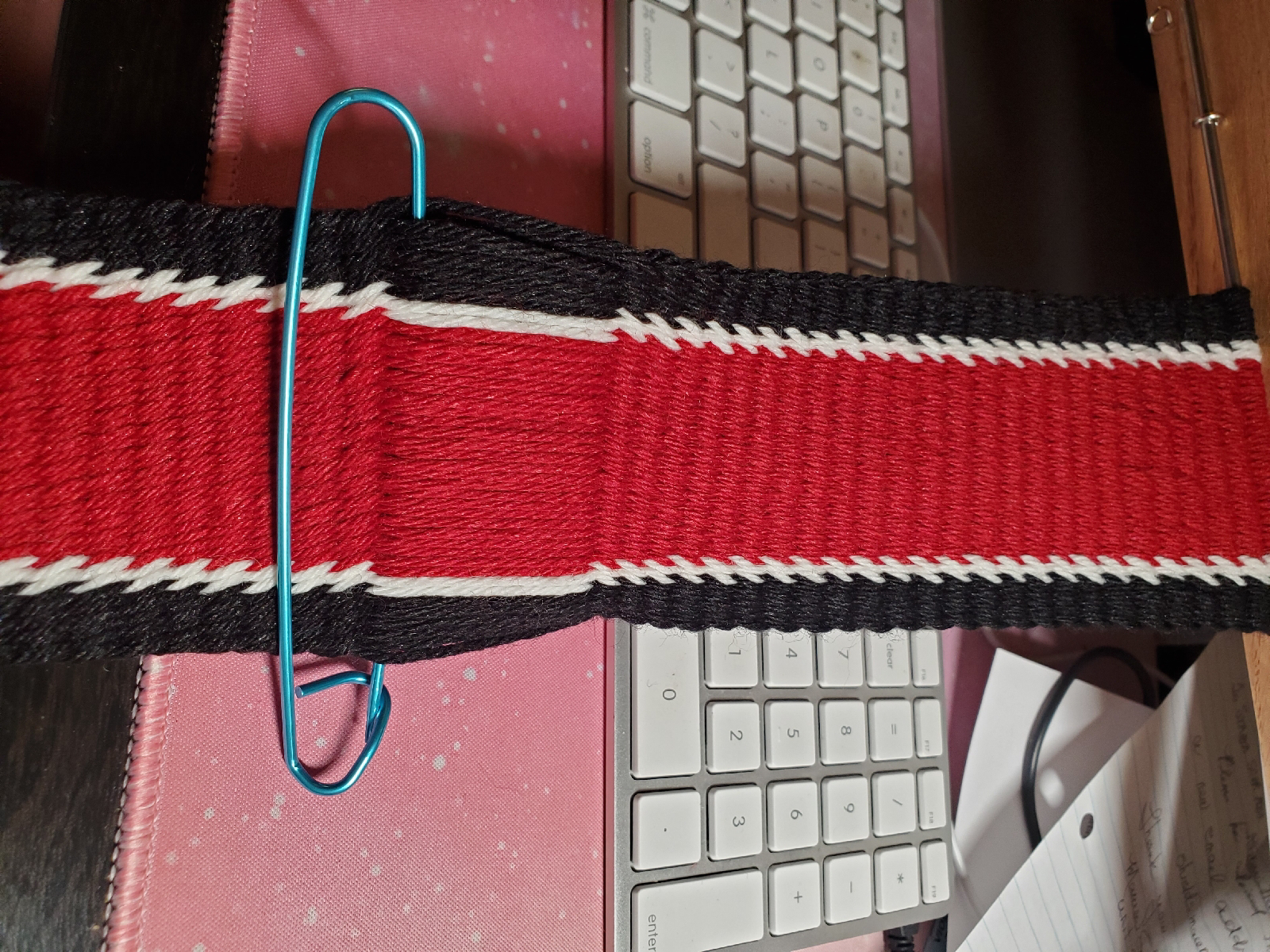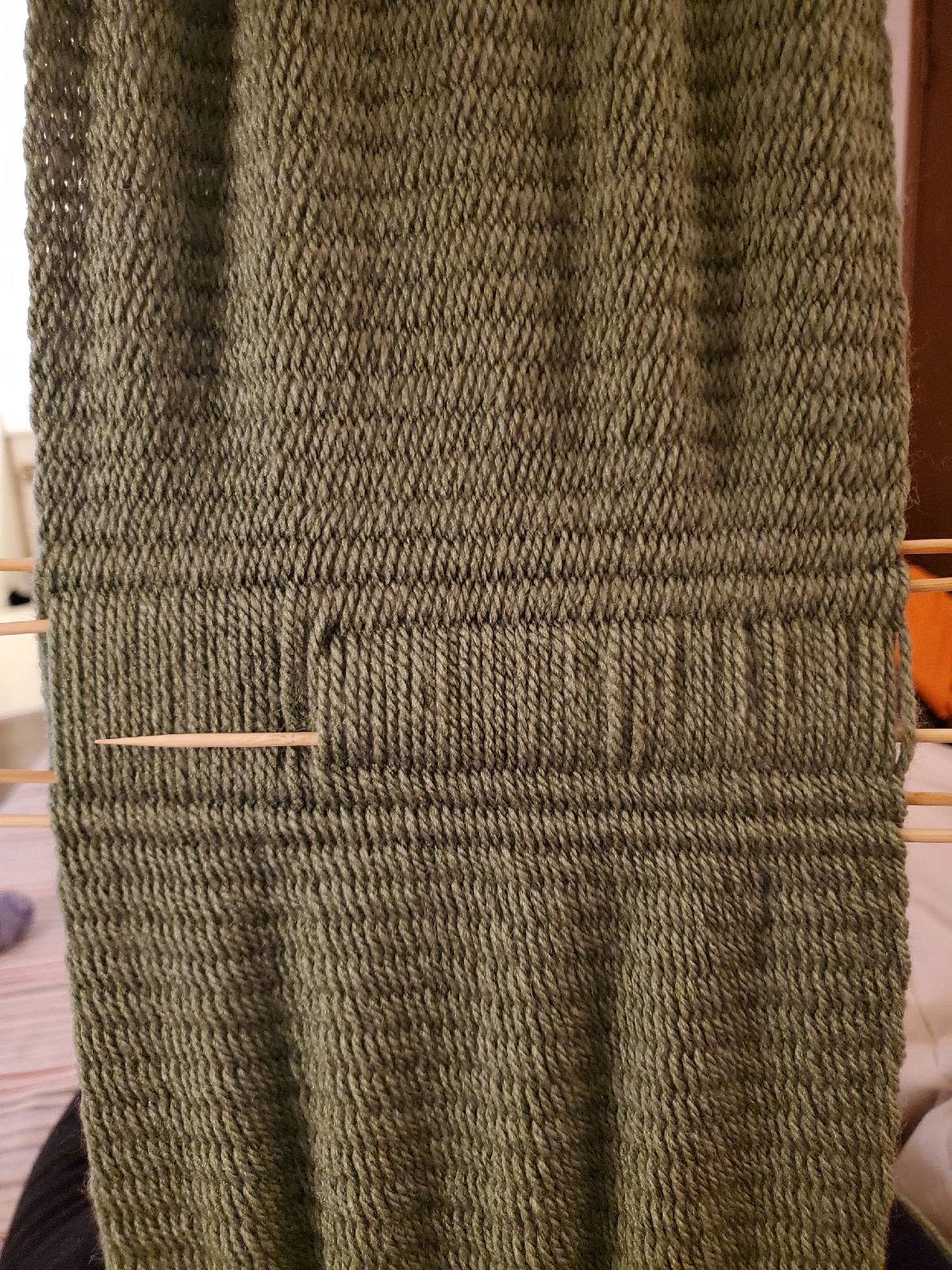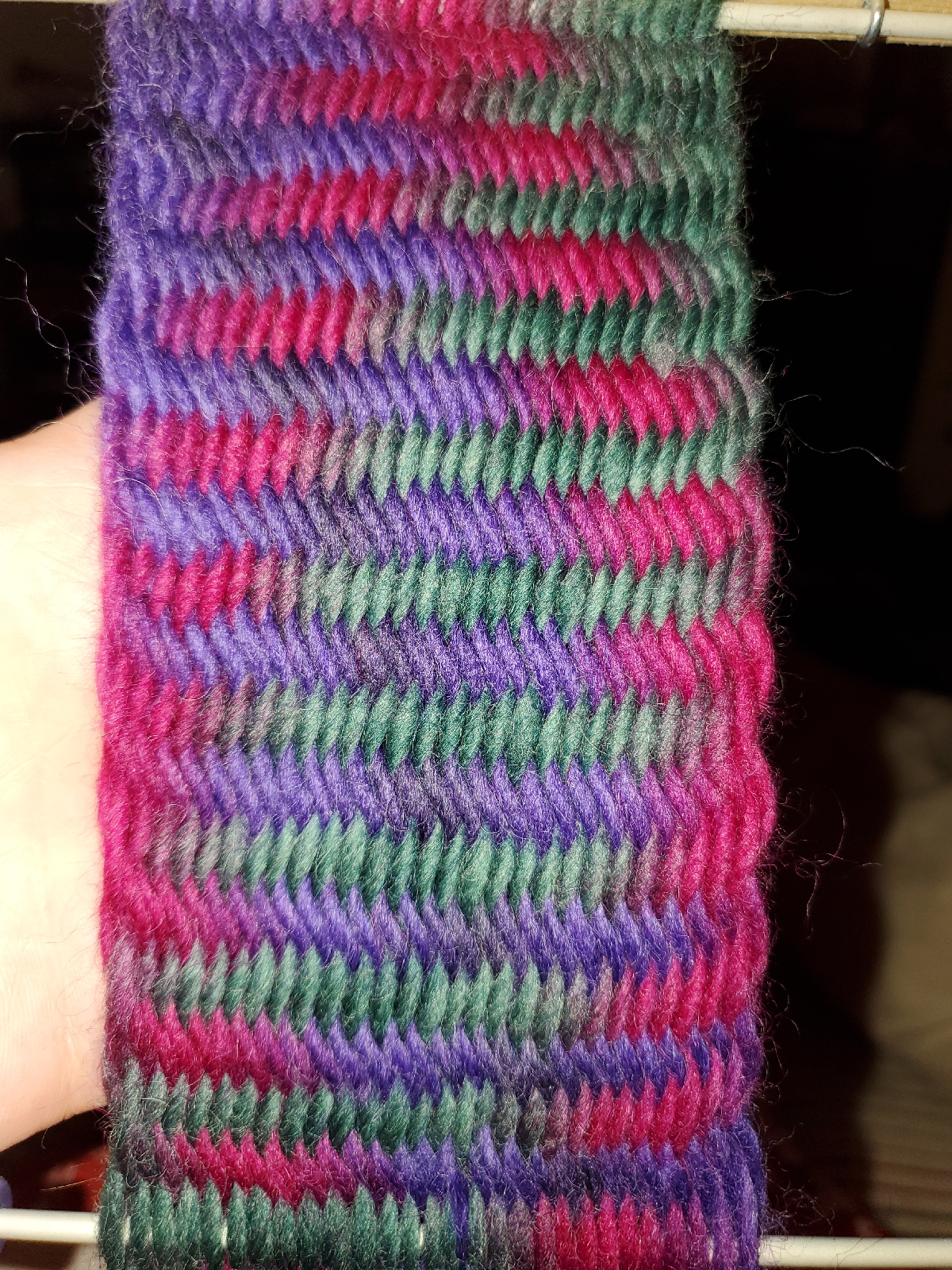Språng progress!

It has been a while since my last post, so here's a short one detailing my progress in språng. I am still working though the year long Språng a-long, and am up to June. This month has me making bars and twists, like so: Hard to get a great picture sometimes, but it's so lovely when stretched out! Playing with this pattern has really cemented the concept of left edge and right edge stitches, and the neat patterns they can make. I'm also getting much more adept at reading the patterns, which isn't hard, but like any skill it improves with practice. I've also been playing with some lace stitches, making holes, but I don't have any samplers to show as I keep unraveling them to practice. My finishing skills are still "emerging" but those will come with time and practice as well. Enjoy! YIS, AW





